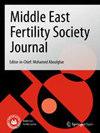Comparative study to determine the proper sequence of simulation training, pelvic trainer versus virtual reality simulator: a pilot study
IF 1.3
Q4 REPRODUCTIVE BIOLOGY
引用次数: 0
Abstract
Increased surgical efficacy has led to a remarkable increase in the usage of minimally invasive surgical procedures since their inception. The use of simulation in surgical teaching has grown significantly during the past 10 years. Several laparoscopic simulators have been built. Virtual reality (VR) simulators and box trainers (BTs), often known as pelvic trainers, are the two primary training modalities used in hospitals and clinical training institutes for the development and acquisition of laparoscopic skills. Our study aimed to evaluate the proper sequence of pelvic trainers and VR simulator training to improve laparoscopic gynecological skills. We carried out this pilot study at the Virtual Endoscopic Simulation and Skills Acquisition Laboratory at the Obstetrics and Gynecology Department in the Kasr Al Ainy Hospital, Faculty of Medicine, Cairo University, Egypt, from February to August 2022. All residents with minimal or without laparoscopic experience (twenty residents) were divided into two groups and classified as (group A versus group B). Group A’s training began with a pelvic trainer, which was tested using a checklist. Later, the group trained on a virtual reality simulator, which tested them using an electronic autoassessment. After training on a virtual reality simulator and passing an electronic autoassessment test, group B moved on to pelvic trainers and had a checklist-based assessment. We compared pelvic trainer tasks between the training groups, and detected no significant differences in camera navigation, cutting pattern, peg transfer, or running stitches (P values 0.646, 0.341, 0.179, and 0.939 respectively); when we compared VR simulator tasks between the training groups, there were no significant differences in camera navigation, cutting pattern, peg transfer, or running stitches (P values 0.79, 0.3, 0.33, and 0.06, respectively). There was no difference in training, between residents who started on a pelvic trainer or the VR simulator; therefore, both could be used in laparoscopic training with no preferred order. The trial was registered at clinicaltrials.gov with the name “Pelvic trainer vs VRS” and the identifier “NCT05255614.” The registration date was January 19, 2022, and the trial was prospectively registered. URL: https://register.clinicaltrials.gov/prs/app/action/ViewOrUnrelease?uid=U0004GED&ts=22&sid=S000BR5D&cx=t6mc14确定骨盆训练器与虚拟现实模拟器模拟训练正确顺序的比较研究:一项试点研究
自微创外科手术诞生以来,由于手术疗效的提高,微创外科手术的使用率显著增加。在过去 10 年中,模拟在外科教学中的应用有了显著增长。目前已建造了多个腹腔镜模拟器。虚拟现实(VR)模拟器和箱式训练器(BT)(通常称为骨盆训练器)是医院和临床培训机构用于开发和学习腹腔镜技能的两种主要培训方式。我们的研究旨在评估盆腔训练器和 VR 模拟器训练的正确顺序,以提高腹腔镜妇科技能。2022 年 2 月至 8 月,我们在埃及开罗大学医学院 Kasr Al Ainy 医院妇产科的虚拟内窥镜模拟和技能习得实验室开展了这项试点研究。所有只有或没有腹腔镜手术经验的住院医师(20 名)被分为两组(A 组和 B 组)。A 组的培训从骨盆训练器开始,使用检查表进行测试。随后,该组在虚拟现实模拟器上进行培训,模拟器使用电子自动评估对他们进行测试。在虚拟现实模拟器上训练并通过电子自动评估测试后,B 组转向骨盆训练器,并进行基于核对表的评估。我们比较了培训组之间的骨盆训练器任务,发现在相机导航、切割模式、钉子转移或跑针方面没有显著差异(P 值分别为 0.646、0.341、0.179 和 0.939);我们比较了培训组之间的虚拟现实模拟器任务,发现在相机导航、切割模式、钉子转移或跑针方面没有显著差异(P 值分别为 0.79、0.3、0.33 和 0.06)。开始使用骨盆训练器或 VR 模拟器的住院医师在培训方面没有差异;因此,两者都可用于腹腔镜培训,没有先后顺序之分。该试验已在 clinicaltrials.gov 网站注册,名称为 "骨盆训练器与 VRS",标识符为 "NCT05255614"。注册日期为 2022 年 1 月 19 日,试验为前瞻性注册。网址:https://register.clinicaltrials.gov/prs/app/action/ViewOrUnrelease?uid=U0004GED&ts=22&sid=S000BR5D&cx=t6mc14
本文章由计算机程序翻译,如有差异,请以英文原文为准。
求助全文
约1分钟内获得全文
求助全文
来源期刊

Middle East Fertility Society Journal
REPRODUCTIVE BIOLOGY-
CiteScore
2.80
自引率
0.00%
发文量
32
审稿时长
45 weeks
 求助内容:
求助内容: 应助结果提醒方式:
应助结果提醒方式:


